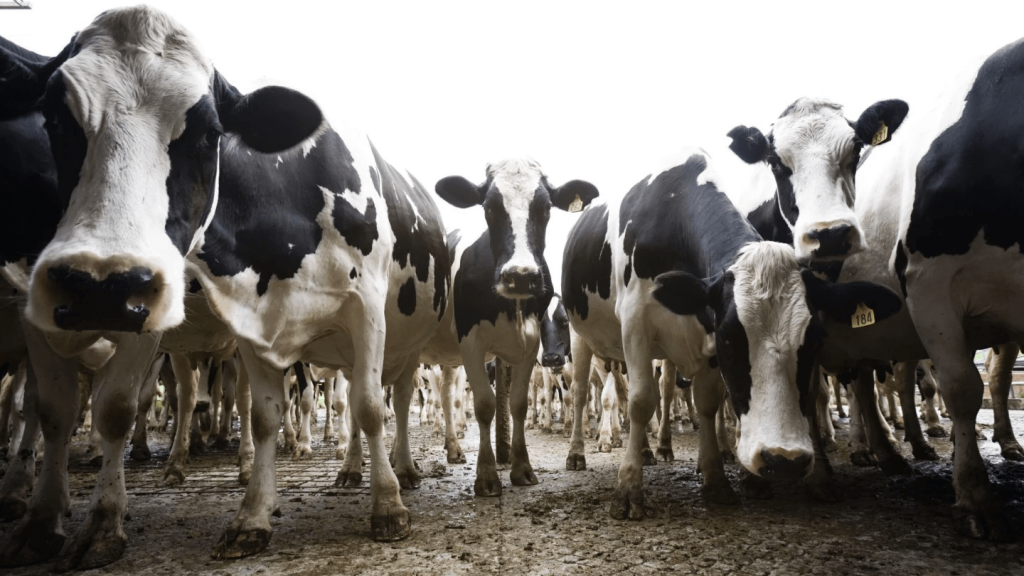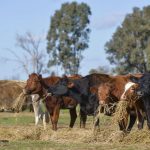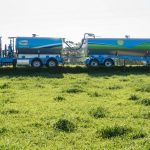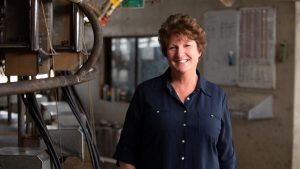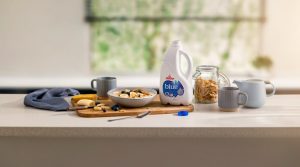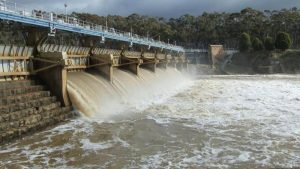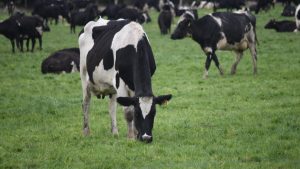
WA dairy farmers are “just about extinct”, with little hope on the horizon after fresh contracts drawn up in June barely altered prices to deliver more sustainable returns, despite a boost in supermarket sales nationally during the lockdown.
In late March, shoppers watched as shelves all but emptied, leading to fewer choices, purchasing limits and a preparedness by customers to pay more per litre.
“WA is a very isolated and finite industry; there isn’t much alternative other than keeping a healthy WA dairy industry and we need to start recognising that and achieving that,” WAFarmers dairy council president Michael Partridge said.
Nearly a decade of house-brand milk fixed pricing at $1-a-litre by the supermarket giants Coles and Woolworths, with only a slight increase of 10-20 cents over the past 12 months, has continued to mislead consumers about the true cost of production and put the squeeze on the suppliers who pay producers.
Mr Partridge, who is a fourth-generation Brunswick Junction farmer, said COVID-19 sales did not put more in farmers’ pockets.
“The supermarkets need to look after the farmers and the processors because without farmers and processors the supermarkets are simply empty shelves,” he said.
Panic-buying drove national supermarket sales up by 4.8 per cent in the four weeks to March 22, but across the 12 weeks to April 19, sales averaged out to an increase of 3.8 per cent, Nielsen data shows.
But despite the grocery sales jump, which extended to 27.3 per cent in everyday cheese, 9.3 per cent in yoghurt in March, and 31.8 per cent in butter until April, the pandemic may have hurt local farmers because it reduced processors’ more profitable wholesale trade to food businesses such as cafes.
“There was increased demand,” Mr Partridge said. “The evidence does show that the supermarkets did well during COVID-19, but because all the delis were closed down there was less higher-valued milk sold through the route trade, as in through service stations, cafes … and there was more of the commodity-type milk sold at the supermarket, so overall demand didn’t change a lot for long.”
Overall revenue for all of Woolworths’ divisions in the three months to the end of March came in at $16.4 billion, up 10.7 per cent compared to the same quarter last year, and significantly higher than the 6 per cent sales increase reported at its half-year result. Coles’ third-quarter result showed a 13.8 per cent jump to $8.2 billion in revenue for its supermarket division.
For second-generation Harvey dairy farmer Michael Angi, who is $2.7 million in debt and not able to draw a wage from his Wokalup farm, frustration is an understatement.
“Farms have gone broke, farmers have killed themselves, no one is listening until there is no milk on the shelf … [it’s] getting to that point now that we’re down to 5000 [dairy farmers] Australia-wide,” he said.
“We’re the only farmers to get a little bit because we’re just about extinct.”
The federal government’s deregulation of the dairy industry 20 years ago, which allowed supermarkets to enter the space in 2010, led to a mass exodus of WA milk producers, dropping from 419 in 2000 to 165 in 2010, with farmers halving nationally and still declining to this day.
“Every farmer around here is in some sort of a depression,” Mr Angi said. “No one is happy doing what they’re doing for nothing.
“Back when I was growing up there was a sense of pride in the industry – we don’t even get together to talk anymore because we’re sick of just talking about doom and gloom; about getting robbed for our milk.
“Most parents that I know on farms won’t even let their kids come to the dairy; they’re pushing them in a different direction because they don’t see a future for them to carry on.
“So once they’re gone I can’t see how, without some sort of investment or backing, a new person could start farming; you need $2 million-plus to start a dairy farm just to milk an average herd of about 100 cows.”
“If the government doesn’t wake up it’ll be too late.”
Dairy farmer Michael Angi
A June report into the national dairy outlook released last week found business confidence was lowest in WA, with the western dairy region the only area where farmers did not expect higher profits in 2020 than achieved on average over the past five years.
“We made all processors well aware that the cost of production had gone up about 10 cents a litre over the past five years, mainly due to higher feed costs, and tried to get some relief at the farmgate price, which hasn’t transpired unfortunately,” Mr Partridge said.
“New contracts have been out since the first of June and there has been no forward price.
“Milk production has continued to drop in the state, so despite having a reasonable start to this season [from] Capel south, there’s not a huge amount of positivity in the industry.”
However, the state’s largest and oldest processor, Brownes Dairy, announced a small improvement to its farmgate price with its contracts due to go out in July.
‘As good as mining if treated right’
Only 60 per cent of 150 farmers in the western region expect to return a profit this year, down from 65 per cent last year. Delivering $188 million worth of dairy, 10 per cent of farmers in the region are winding down production and just 3 per cent are expanding.
Mr Partridge said while there was a range in profitability of farmers in the state, “the average data shows the cost of production is around 50 cents a litre and the average price is 50 cents a litre so, on average, dairy’s been subsidised by the beef sales within a dairy business”.
For Mr Angi it has meant running the farm with just his 17-year-old son, servicing 500 cows, 180 of those milking, which is half of what he could produce if running at full capacity.
“I can have another three people here working for me, but I just can’t afford it,” he said.
“There are plenty of properties around here that, with a bit of money spent on them, can be made into a very profitable business that can give jobs to the economy.
“It’s as good as the mining industry if it’s treated right, but for 20 years we’ve been pushed aside.”
Supermarkets’ ‘unfair’ power
Coles is in the process of going direct to its WA dairy farmers to negotiate contracts and then set a toll price for processors to bottle their products, while Woolworths is planning to continue a 10-cent levy introduced before COVID-19 which goes directly to the 450 farmers nationally who service its homebrand label.
But Mr Partridge warned only a few WA farmers would benefit from the Coles deal, which would cut out WA’s three major processors Brownes, Lion Dairy (Masters) and Lactalis Australia (Harvey Fresh) which support the majority of local dairy farmers.
“The power in the marketplace belongs to the supermarkets,” he said.
“They own the shelf space so therefore they own the consumer and I know there’s a big imbalance of that power between the processor and the retailer.
“And what the code [of conduct, which came into being in January and meant all processors had to reveal their pricing at the same time] was attempting to do was to address the power between the farmer and the processor, and there’s not much being done at the top end.
“When you own the shelf space you have a lot of bargaining position and if you own the shelf space should you be a competitor in the processing sector?
“Is that essentially an unfair advantage?”
Solution needs to be national
Australian Dairy Farmers went before a Commonwealth inquiry into their performance and profitability last Friday calling for a 50 per cent increase to milk prices in supermarkets.
They have lobbied for retailers to temporarily increase the price of house brand milk to $1.50 per litre and pass the 50 cents back to farmers via their processors.
They do not support a minimum farmgate milk price, “due to its market distorting impacts”, which was being investigated by WA Agriculture Minister Alannah MacTiernan before COVID-19 hit.
Farmers and processors agree a pricing solution has to be at a national level.
Mr Angi says they’re not being greedy, “just trying to make a living”.
“If the milk was put at the normal price, you wouldn’t hear boo from people; they would just accept it,” he said.
“That’s why I can’t understand why they don’t just put some sort of base price on the milk.
“Something has to be done at a government level because Coles and Woolworths ain’t going to do it and the suppliers are stuck in the middle.
“That’s our only hope that I can see.”
